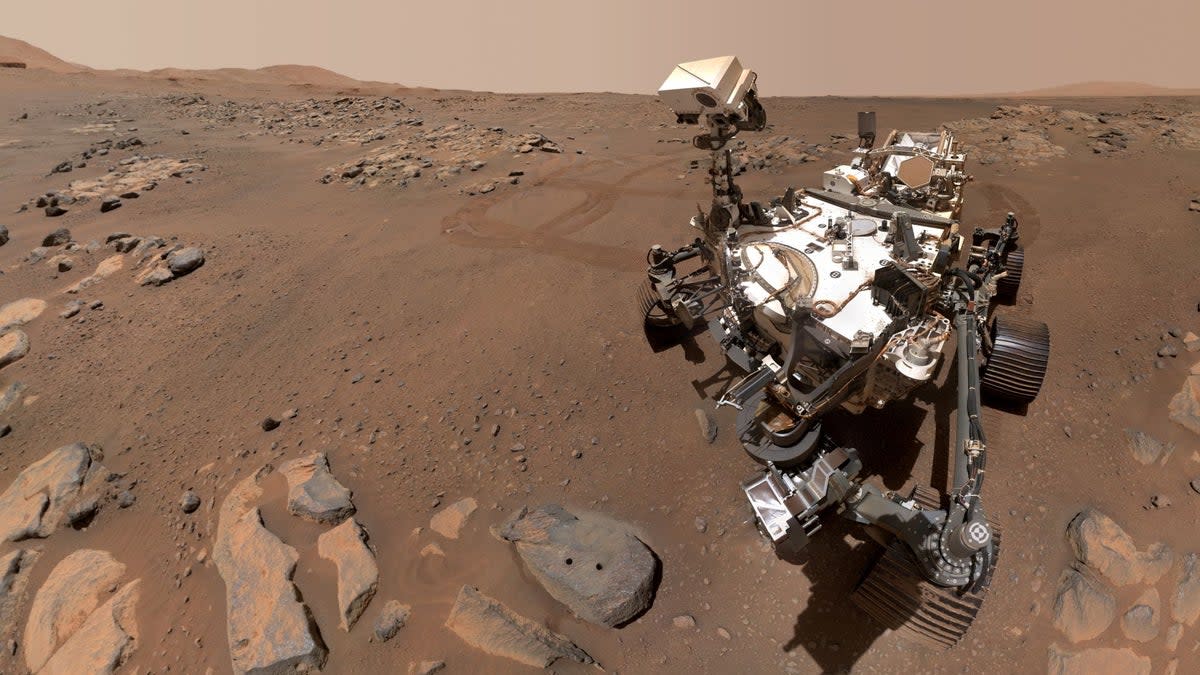Mars isn’t entirely red, scientists say

Mars is not entirely red, a new study has indicated.
Often referred to as the red planet, popular depictions of Mars call to mind red rocks, stretching on forever.
But Nasa’s Perseverance rover found something else besides – something green. As it arrived at Mars’s Jezero crater, looking for information on its past as a lake, it found surprising rocks, scientists say.
First, scientists were startled to find that the ground was not made up only of sedimentary rocks that had accumulated during the crater’s time as a lake. There were also volcanic rocks, and many of them, scientists say.
What’s more, those rocks are made up of chunks of olivine. That is a muddier and less shining version of peridot, which gives the beaches of Hawaii their deep green colour.
The finding is one of many that came from analysis of early data sent back to Earth from Perseverance, the Nasa Mars rover that arrived on the planet in 2020.
There are similar rocks to those examined in the new study that can be found on Earth, scientists say – but they are generally blasted by billions of years of wind, water and the rest of their busy lives on Earth. On Mars, however, they are kept pristine by the vastly different environment.
“We started to realize that these layered igneous rocks we were seeing look different from the igneous rocks we have these days on Earth,” said Roger Wiens, a professor from Purdue University and researcher on the new paper. “They’re very like igneous rocks on Earth early in its existence.”
Those rocks could therefore help tell us about the history of life on Earth – as well as aliens may once have lived on Mars.
“One of the reasons we don’t have a great understanding of where and when life first evolved on Earth is because those rocks are mostly gone, so it’s really hard to reconstruct what ancient environments on Earth were like,” said Briony Horgan, another researcher on the study and professor at Purdue.
“The rocks Perseverance is roving over in Jezero have more or less just been sitting at the surface for billions of years, waiting for us to come look at them. That’s one of the reasons that Mars is an important laboratory for understanding the early solar system.”
A paper describing the findings, ‘Compositionally and density stratified igneous terrain in Jezero crater, Mars’, is published in the journal Science Advances.

 Yahoo News
Yahoo News 
